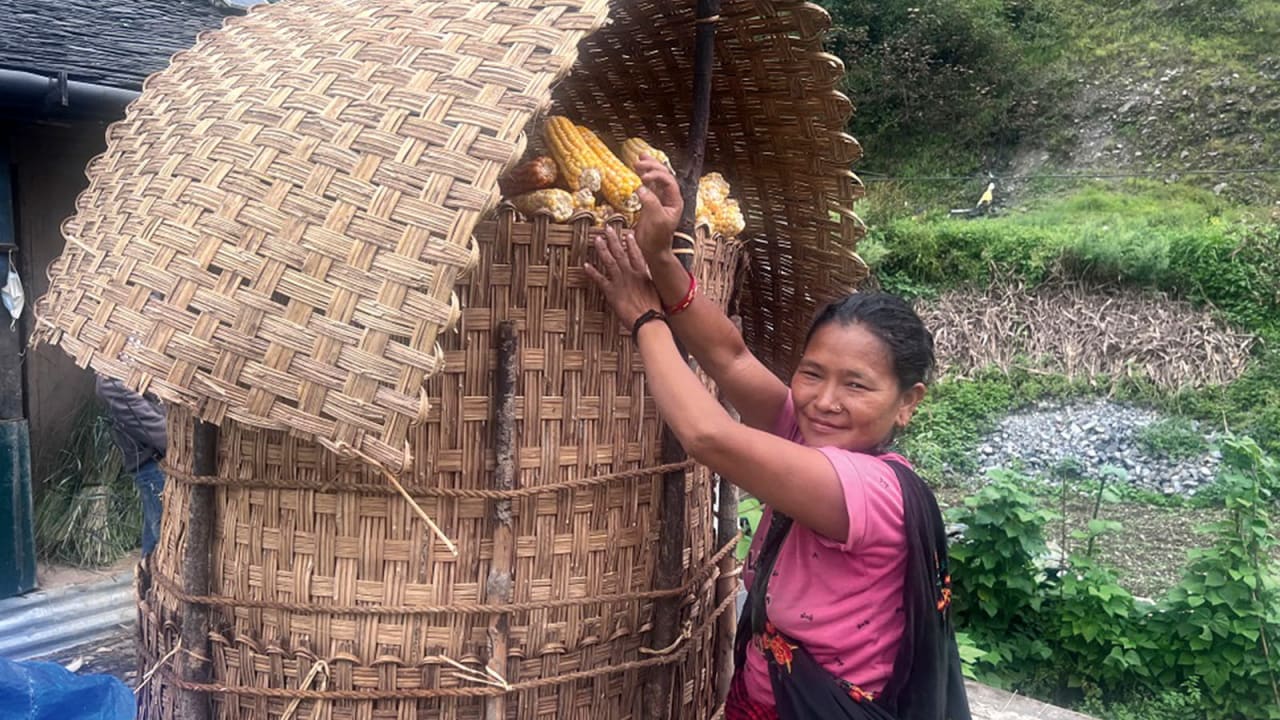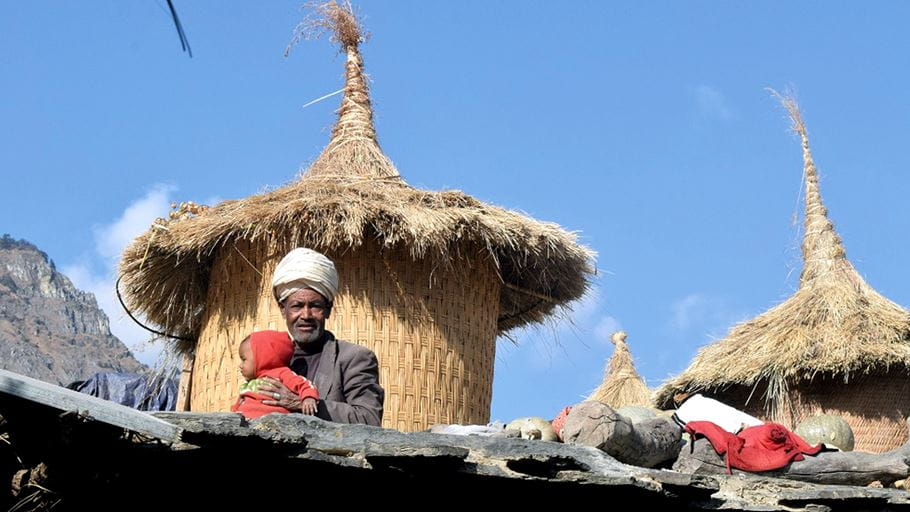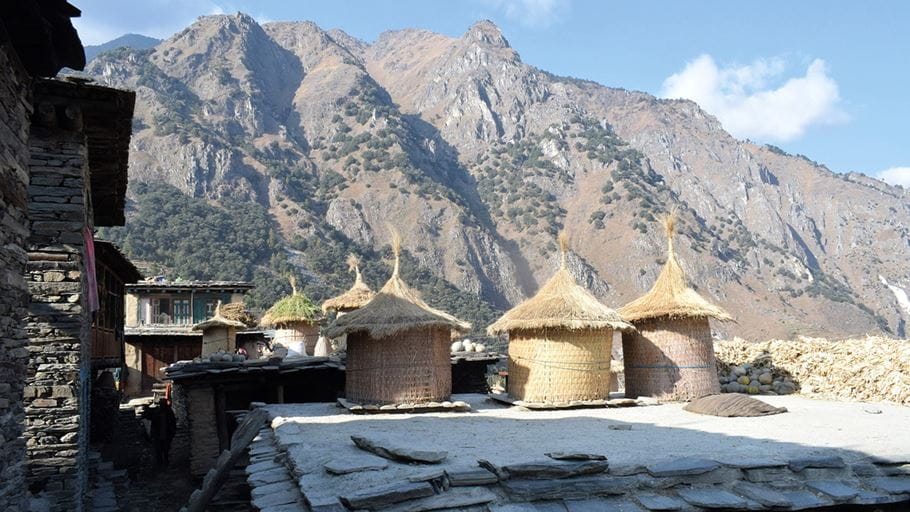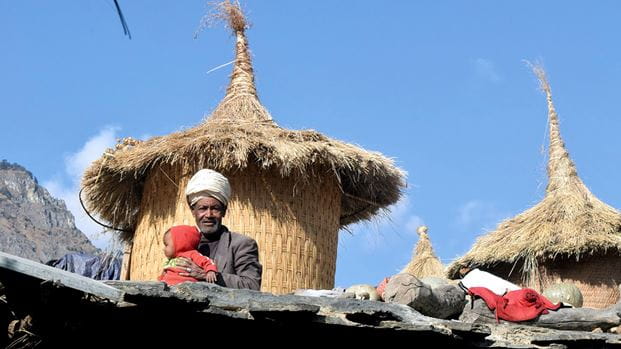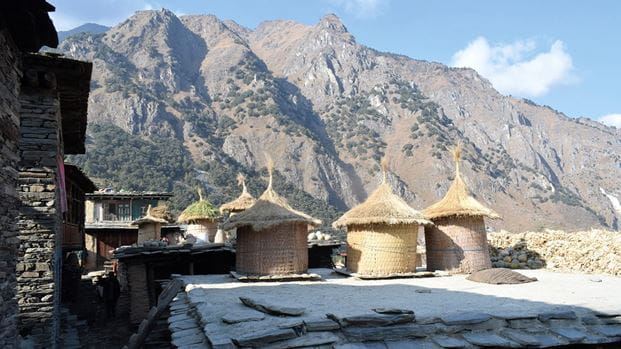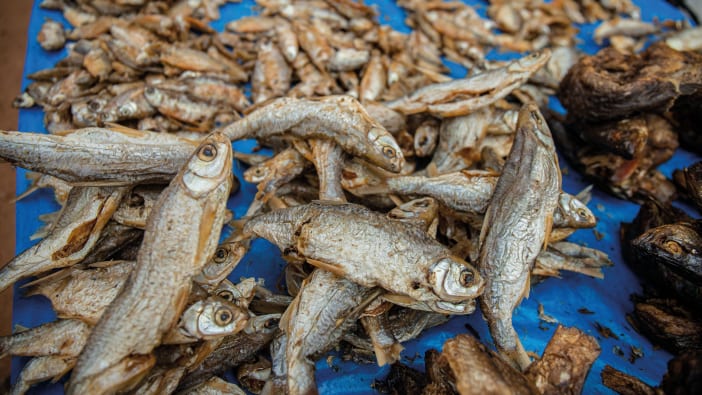In the Nepalese mountains of Putha Uttarganga, most people are subsistence farmers. Maize is the main crop, followed by potato, wheat and beans. However, very few people have enough food to eat all year round, with almost a fifth struggling to find enough food for more than six months a year.
Because maize production is seasonal, farmers need to be able to store their maize safely and effectively to make sure it lasts as long as possible.
Dry
It is crucial that, before storage, any type of grain is properly dried. This reduces the risk of damage from insects and contamination by aflatoxins – poisons produced by fungi that can cause serious health problems in humans and livestock.
Crops should be dried either directly in the sun, or in a well-ventilated place that is protected from damp and flooding. To avoid contamination the grains should not touch the soil. For example, they might be dried on bamboo mats or raised structures such as drying racks, or hung from a roof.
In Putha Uttarganga, freshly harvested maize is hung on wooden racks or placed on roofs to dry in the sun and wind for several days before storing.


